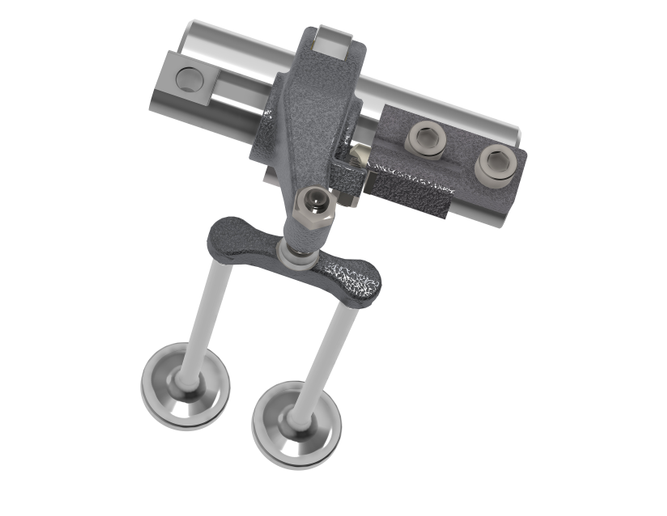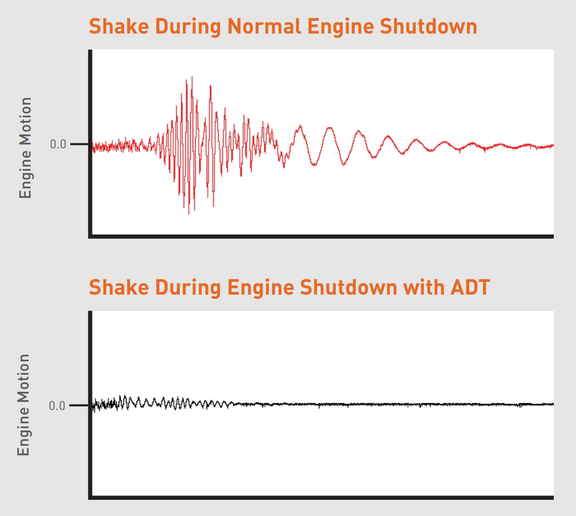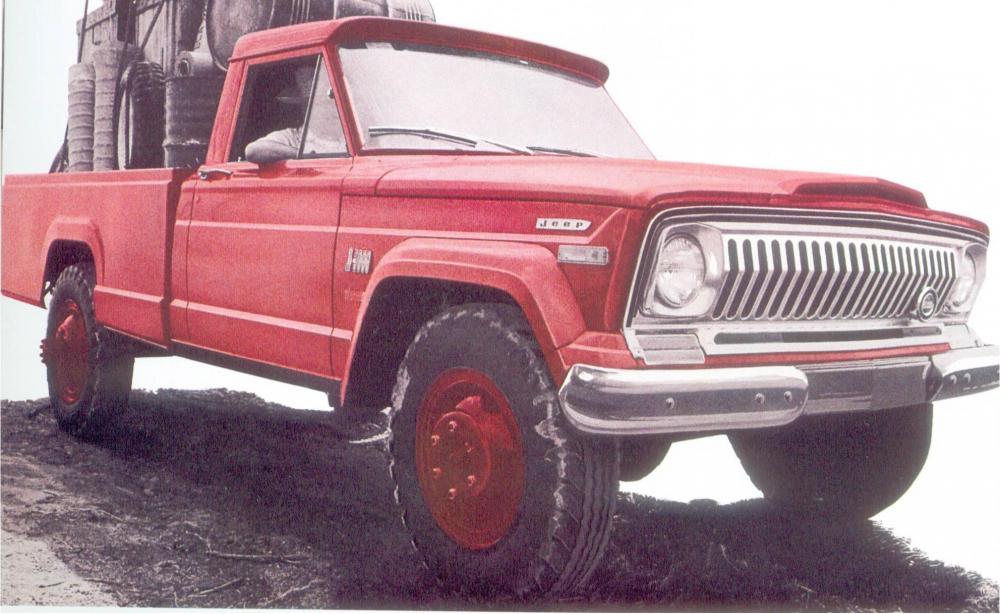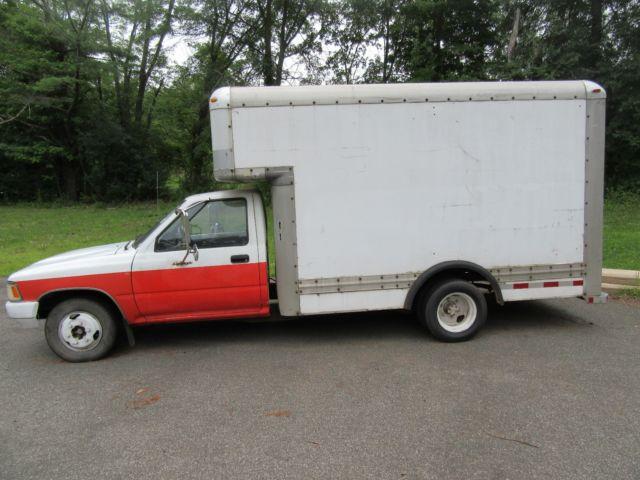
kscarbel2
Moderator-
Posts
18,868 -
Joined
-
Days Won
114
Content Type
Profiles
Forums
Gallery
Events
Blogs
BMT Wiki
Collections
Store
Everything posted by kscarbel2
-
Optishift is the right idea, but Voith's VIAB is light years ahead of it. . .
-
But the Mack brand M-drive, a rebadged Volvo I-shift, only has one countershaft. Can one work? Obviously it's possible with precautions taken, but my personal preference from experience is to divide the load stress between two. Eaton and market leader ZF, for example, all have two. On Eaton, we've seen almost 4 jumps in tech since their original AMT.....be sure you try their current product before your judge.
-
I like the export version CJ-10 pickup more. No-nonsense pickup like the LandCruiser 70 Series pickup (https://www.toyota.com.au/main/landcruiser-70). There's a nice sized market in North America for the more affordable Land Cruiser 70 Series (versus the luxury Land Cruiser 200), but Toyota fails to grasp that. .
-
This is the one with the cab and bed mounted on a Dodge W250 chassis? Really like it. .
-
I just noticed that our very own DailyDiesel (Eric) did a video on the CJ-10 the other month. .
-
Paul, is this job going to result in a new video series? Everyone enjoyed the last one.
-
Mack B model wrecker tow truck - $6500 (Bucks county pa
kscarbel2 replied to justintocci's topic in Trucks for Sale
https://philadelphia.craigslist.org/cto/d/mack-model-wrecker-tow-truck/6753868709.html -
Mack B model wrecker tow truck - $6500 (Bucks county pa
kscarbel2 replied to justintocci's topic in Trucks for Sale
With that air cleaner, it's a diesel. -
I'm a consumer. I have never demanded.....nor do I want.....self-driving and autonomous vehicles from the auto industry.
-
The CJ-10 airport tug I knew about. However I didn't know there were other versions of the CJ-10. And that Nissan Diesel SD33 is the same engine that was optional in the International Harvester Scout (1976-1979). I almost bought one of those. http://www.fourwheeler.com/project-vehicles/129-1210-the-elusive-jeep-cj-10/ http://www.fourwheeler.com/features/1508-big-ten-the-last-cj-10-jeep-encyclopedia/
-
Jacobs Diesel Engine Decompression System Can Save Fuel
kscarbel2 replied to kscarbel2's topic in Trucking News
The people at Jacobs never fail to impress.......ever. -
Heavy Duty Trucking (HDT) / November 28, 2018 Jacobs Vehicle Systems has introduced Active Decompression Technology (ADT), which the company says enables heavy-duty commercial vehicles to benefit from an engine stop-start system and eliminating engine-shake at both start-up and shutdown. In addition to improving fuel economy and reducing emissions, ADT also improves cold engine starts, reduces loading and wear on engine components during start-up, and makes start-up faster, according to Jacobs. Jacobs says the new ADT device incorporates valve actuation technologies proven over many millions of miles and can be cost-effectively added to many engine platforms. Stop-start engine technology, which automatically switches off the engine when it would otherwise be idling, is widely adopted by automotive manufacturers, however, it is less common in heavy-duty commercial vehicles. This is largely due to the intrusive engine and cabin-shake experienced whenever a heavy-duty diesel engine starts or stops, and because of the cost of technologies needed to mitigate increased wear-and-tear on the starter motor, ring-gear, and battery. ADT significantly reduces these issues. Extensive testing has shown that ADT reduces the magnitude of engine-shake during shutdown by 90%, which is when vibrations transmitted to the cabin are of greatest frequency and strength. This has the additional benefit of preventing disturbance to drivers sleeping in cabs overnight when there are automated engine starts and stops to maintain battery charge. The ADT device is automatically activated by the engine control unit (ECU) whenever the engine shuts down or starts up, and works by keeping the engine valves open and the cylinders decompressed. When switching off the engine, it “coasts” to a smooth shutdown without causing the cab to shake. When starting up, the engine is kept in a decompressed state which decreases cranking torque by 40% and allows the engine to spin up to twice its normal speed for smoother starting, faster priming of the fuel system, and decreased wear on the starter gear, fly wheel and other components. This can also allow the use of smaller and lighter batteries, cables, and starter. By enabling the engine to be turned-over while decompressed, ADT also improves start-ups in cold temperatures by enabling the engine to reach its critical compression ignition speeds. When combined with supplemental air inlet heaters, ADT also enables the engine cylinders to be pre-warmed without the engine load from compression; especially useful when freezing temperatures have reduced battery levels. When high cranking speed is reached, the engine compression is reactivated and cylinder-fueling begins. “ADT is another development of Jacobs’ well-proven valve actuation technologies to deliver another set of benefits,” said Steve Ernest, vice president of engineering and business development at Jacobs Vehicle Systems. “Some OEMs will be interested in ADT because it enhances vehicle refinement by eliminating engine-shake and cabin-shake. Other customers – particularly those whose vehicles endure heavy stop-start cycles - will welcome the reduced component load, fuel economy and emissions advantages.” . .
-
The learning never ends. I had no idea that VAM, Jeep's licensee in Mexico, produced this troop carrier which placed the front of a CJ5 atop a J4000 chassis with its pickup bed......the J3M. .
-
Note the heavy-duty front rims on this Mexican production J-series, and the locally-produced rear bed. .
-
Hino Enters Heavy Duty Market with XL Series Truck
kscarbel2 replied to kscarbel2's topic in Trucking News
Of course Toyota used to offer a 1-ton cab & chassis in the US market with either single or dual tire configuration, and it sold very well. Penske Leasing ran thousands. . -
Isn't that a J20 Paul? I didn't think they built a 1-ton in 1981. I'd like to acquire a clean M715.
-
You said Peterbilt 388.....that's a highway truck chassis. You'd need a 367.
-
GM's Ammann vacates president role to lead AV unit Michael Wayland, Automotive News / November 29, 2018 General Motors President Dan Ammann will step down from his role to become CEO of the automaker's Cruise autonomous vehicle unit. The move -- effective Jan. 1 -- emphasizes the importance of the operations to the future of GM, which plans to launch a public self-driving ride-hailing fleet in 2019. It also places Ammann, a former Wall Street banker who joined GM as its treasurer in 2010, to potentially lead a spin-off and initial public offering of Cruise, which analysts have speculated is eventually coming. A successor for Ammann, 46, will not be named. GM CEO Mary Barra, 56, will absorb his responsibilities over global regions and GM Financial, while CFO Dhivya Suryadevara, 39, takes responsibility of the automaker's corporate development, the automaker said today. Cruise's current CEO and co-founder, Kyle Vogt, will become president and chief technology officer of the operations. Ammann and Vogt will "set the strategic direction" for Cruise. Ammann on Thursday described it as a "partnership" with Vogt leading technical side of the business and Ammann focusing on "commercialization and other scaling from a corporate point of view." Ammann, who will be based in San Francisco, declined to comment on the possibility of a spinoff or IPO. "All the energy right now is focused on getting to the point of initial commercial deployment," Ammann told Automotive News, later saying the company could be "open-minded to other opportunities down the road." Bloomberg reported earlier this year that GM was talking with banks and internally about its eventual options for Cruise, including a public offering, spinoff or separate stock listing. Ammann said he is "thrilled" to be dedicating 100 percent of his time and energy to Cruise, which is currently valued at $14.6 billion following recent investments. “It’s our belief that this technology will only have the impact that we want it to have on the world if it’s deployed at massive scale,” Ammann said. “So, we need to be preparing for that as we continue the technology as we prepare initial commercialization.” Spearheaded by Ammann, GM acquired San Francisco-based Cruise Automation in 2016. He has since overseen its expansion from 40 employees to more than 1,000 at the GM subsidiary. “Dan’s talents, I think, would have been underutilized if he was the CEO when there was just 40 people at the company,” Vogt said on Thursday. “To me, it’s sort of the sweet spot where the skills that Dan has will really complement what we have on our leadership team today and take it to the next level. I think the timing is pretty good.” Ammann relinquished other roles as president, including leading Cadillac and global portfolio planning, to GM product chief Mark Reuss in June. The changes follow several major announcements in recent months about GM's autonomous work, including a $2.25 billion investment by the SoftBank Vision Fund of Japan and plans for Honda Motor Co. to invest $2.75 billion in the operations. "These appointments further demonstrate our commitment to transforming mobility through the safe deployment of self-driving technology and move us closer to our vision for a future with zero crashes, zero emissions and zero congestion," Barra said in a Thursday statement. "As we move toward commercial deployment, adding Dan to the strong team led by Kyle is the next step." The announcement also comes three days after Barra and Suryadevara announced a major restructuring of the company's North American production operations and plans to cut 15 percent of the automaker's salaried workforce, including 25 percent of its global executives. Those actions were in part driven by GM’s plans to devote more resources to emerging technologies such as self-driving and autonomous vehicles.
-
Fitzgerald's website doesn't show a Peterbilt 300 series vocational model offering (e.g. 367)...................https://www.fitzgeraldgliderkits.com/peterbilt/ However they do offer the Kenworth T800...........https://www.fitzgeraldgliderkits.com/kenworth/kenworth-t800/ As well as the Western Star 4900SB.................https://www.fitzgeraldgliderkits.com/western-star/western-star-4900-sb/ I would buy as many Fitzgerald Series 60-powered T800s as you can afford, before the government brings their business to a halt. This is a truck....an engine.... that you can make a living with.
-
Unfamiliar with the word, I googled and saw "snarky" means sharply critical or snide...........https://www.google.com/search?source=hp&ei=vzIAXMuLEIK45gK67I-oCg&q=snarky&btnK=Google+Search&oq=snarky&gs_l=psy-ab.3..0i131j0j0i131j0l7.2402.5868..6671...2.0..0.78.517.8......0....1..gws-wiz.....0..0i10.lCm0qm33rzg Personally speaking, your comments here did not come across to me this way. I welcome your comments, which clearly are based on in-depth industry knowledge and experience.
-
Is Fitzgerald doing any vocational models? With the superior Series 60, that would be one good way to go.
-
I can't answer your question. However, I'd like to know how I start out attempting to post a interesting thread on Jeep pickups......and end up with one BMT member focused on bashing another member? Where'd that come from? That was never my intent in posting about Jeep pickups. I have a personal interest in Jeep's pickup heritage, then and now, and thought some other BMT members might share my interest. C'mon man, we're all better than that......you're better than that. We're all a little different.....the world would be an awful dull place if we were all the same. And if we can't get along, the BMT family, in this otherwise dysfunctional world, then what's left???
-
Judge orders new talks in FCA, U.S. case over diesel emissions David Shepardson, Reuters / November 28, 2018 WASHINGTON -- A federal judge in San Francisco on Wednesday ordered the Justice Department and Fiat Chrysler Automobiles NV to hold new talks with a court-appointed settlement master to try to settle the government's civil suit over the Italian-American automaker's diesel vehicle emissions. The Justice Department is seeking "substantial" civil fines from Fiat Chrysler in a suit filed in May 2017 accusing the company of illegally using software that led to excess emissions in 104,000 U.S. diesel vehicles sold since 2014. A person briefed on the matter said the government and Fiat Chrysler have reached agreement on almost all aspects of a settlement after months of lengthy talks but remain "hundreds of millions of dollars" apart on how big the fines will be. In a written order, Judge Edward Chen directed both sides to "fully cooperate and communicate" with settlement master Ken Feinberg "in light of the delay in resolving the United States’ case." Feinberg was ordered "to engage directly with the parties and employ his best effort in facilitating settlement negotiations, including terms of any monetary relief." Feinberg has scheduled a new round of talks with all sides for Dec. 3 in Washington, the person briefed on the matter said. Feinberg declined to comment, saying Chen's order speaks for itself. Fiat Chrysler had no immediate comment. U.S. and California regulators stepped up scrutiny of diesel vehicles after Volkswagen AG admitted in 2015 to illegally installing software in U.S. vehicles for years to evade emissions standards. VW has agreed to pay more than $25 billion in the United States for claims from owners, environmental regulators, states and dealers. Regulators have said Fiat Chrysler diesel vehicles had undisclosed emissions controls that allowed vehicles to emit excess pollution during normal driving. The company has denied any wrongdoing and said there was never an attempt to create software to cheat emissions rules. Last month, the company set aside 713 million euros ($810 million) to cover potential costs related to the case. Reuters reported in February that a settlement offer sent to Fiat Chrysler lawyers by the Justice Department on Jan. 27 would require the company to offset excess pollution and take steps to prevent future excess emissions. The letter included language that a settlement must include very substantial civil penalties. The Justice Department has a separate ongoing criminal investigation into the excess emissions.
-
The irony is, just as Chinese consumers prefer to buy an Audi, BMW or Mercedes-Benz that was made in Germany, versus a China domestic joint-venture plant, they would also prefer a Lincoln with the "Made in USA" decal. Though China production quality is equal to the US, that "Made in China" decal lets half the air out of Ford's sales marketing balloon.
-
Ford seeks to skirt tariffs by speeding China-built Lincoln plan Keith Naughton, Bloomberg / November 28, 2018 Ford Motor Co., banking on China to revive its long-lagging Lincoln brand, is trying to accelerate plans to begin building its luxury models there and avoid profit-sapping tariffs brought about by President Donald Trump’s trade war. Ford, which had planned to start production of Lincoln models in China in late 2019 with a local partner, is trying to move that timing up, even if slightly, to help overcome tariffs China has imposed in retaliation to levies by the Trump administration. “What we want to do is accelerate that,” Joy Falotico, head of Lincoln and Ford’s chief marketing officer, said in an interview. “We will look for opportunities, but it’s a big undertaking and I think it won’t be a significant change in our plans.” Even a small move would help Lincoln, which lacks the local production most of its competitors have in China. Prices have soared as a result of the 40 percent tariffs the country has put on U.S.-built vehicles. Ford is absorbing some of those costs, but Lincoln’s sales have still slowed to a crawl. Falotico spoke ahead of the unveiling of the three-row Aviator at the Los Angeles Auto Show on Wednesday. The model -- one of three SUVs Lincoln is launching in China -- will go on sale in the second half of next year in the country, as well as in the U.S. Ford CEO Jim Hackett has said Trump’s metals tariffs will cost the automaker about $1 billion in annual profit. In August, the company scrapped a plan to export a new model called Focus Active from China into the U.S. Several of the automaker’s top executives have called for Trump to resolve its trade dispute with China. Tariff headwinds Lincoln is also reconsidering plans to export Chinese-built models back to the U.S., Falotico said. Instead, the automaker will likely build the same models in both countries. “It’s about ensuring our competitiveness with the pricing given the tariff headwinds,” she said. The fallout from the trade war came at a bad time for Ford, which was pinning its hopes for growth on a country that it expects to become Lincoln’s top market. After soaring 66 percent last year, China deliveries for the luxury line are up just 3 percent through October, and slumped 6 percent last month. Ford still believes there’s plenty of Chinese appetite for commodious SUVs, and Lincoln arrived in the market just four years ago, so the brand feels new there. It doesn’t suffer from the negative image it has in the U.S. -- that of an aged airport shuttle for business travelers. Lincoln just introduced its mid-size Nautilus and updated compact MKC model crossovers at the Guangzhou auto show and expects to have 125 high-touch, tea-house style dealerships in China by year’s end. Chinese tastes The Aviator was designed with Chinese tastes in mind. Ford lowered the door handles for the nation’s comparatively shorter travelers and styled the second and third rows to be more opulent than the front seats, since many wealthy consumers in the country have chauffeurs. To meet China’s stringent new emissions rules requiring vehicles to be battery-powered, the most expensive version of the Aviator is a plug-in hybrid with an electric motor mated to a twin-turbo gasoline engine. The combination of the two power plants gives the SUV 450 horsepower, on par with the ponies Porsche offers in its plug-in Cayenne SUV. “We’re not trying to be a race car,” John Davis, chief engineer of the Aviator, said in an interview. “But we know premium customers are really interested in performance, frankly, more than they’re interested in fuel economy. And in this case, they get both.” Baked-in costs Packed with technology like the ability to use your smartphone as the car’s key and designed to resemble the downward slope of an airplane wing, the Aviator has the ability to propel Lincoln to “exponential growth” in China by 2020, Falotico said. But Trump’s trade war with China may bring even Ford’s best-laid plans for the Aviator back down to Earth. Ford is baking the cost of tariffs into its business plan, presuming they won’t go away any time soon, Falotico said. “We’re planning that what we have today is what we need to build our business around,” she said. “Any relief to that would be good news.”
BigMackTrucks.com
BigMackTrucks.com is a support forum for antique, classic and modern Mack Trucks! The forum is owned and maintained by Watt's Truck Center, Inc. an independent, full service Mack dealer. The forums are not affiliated with Mack Trucks, Inc.
Our Vendors and Advertisers
Thank you for your support!










